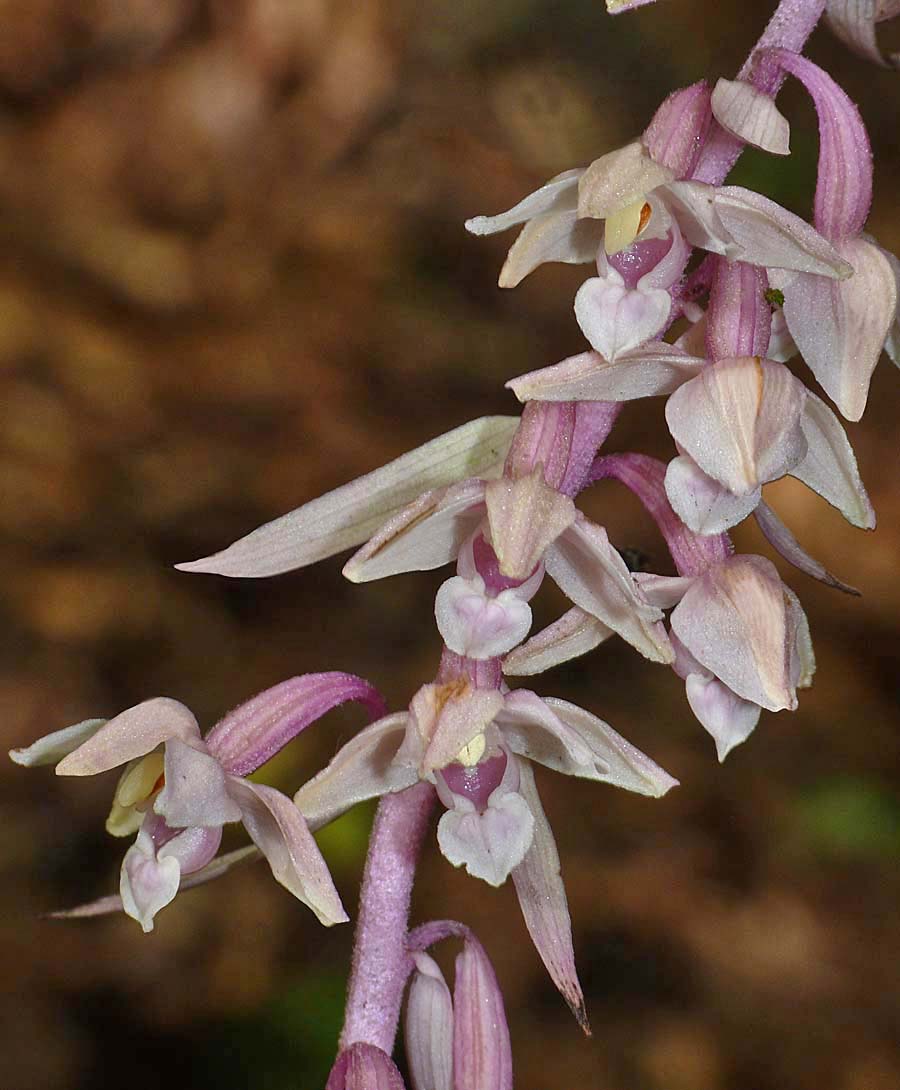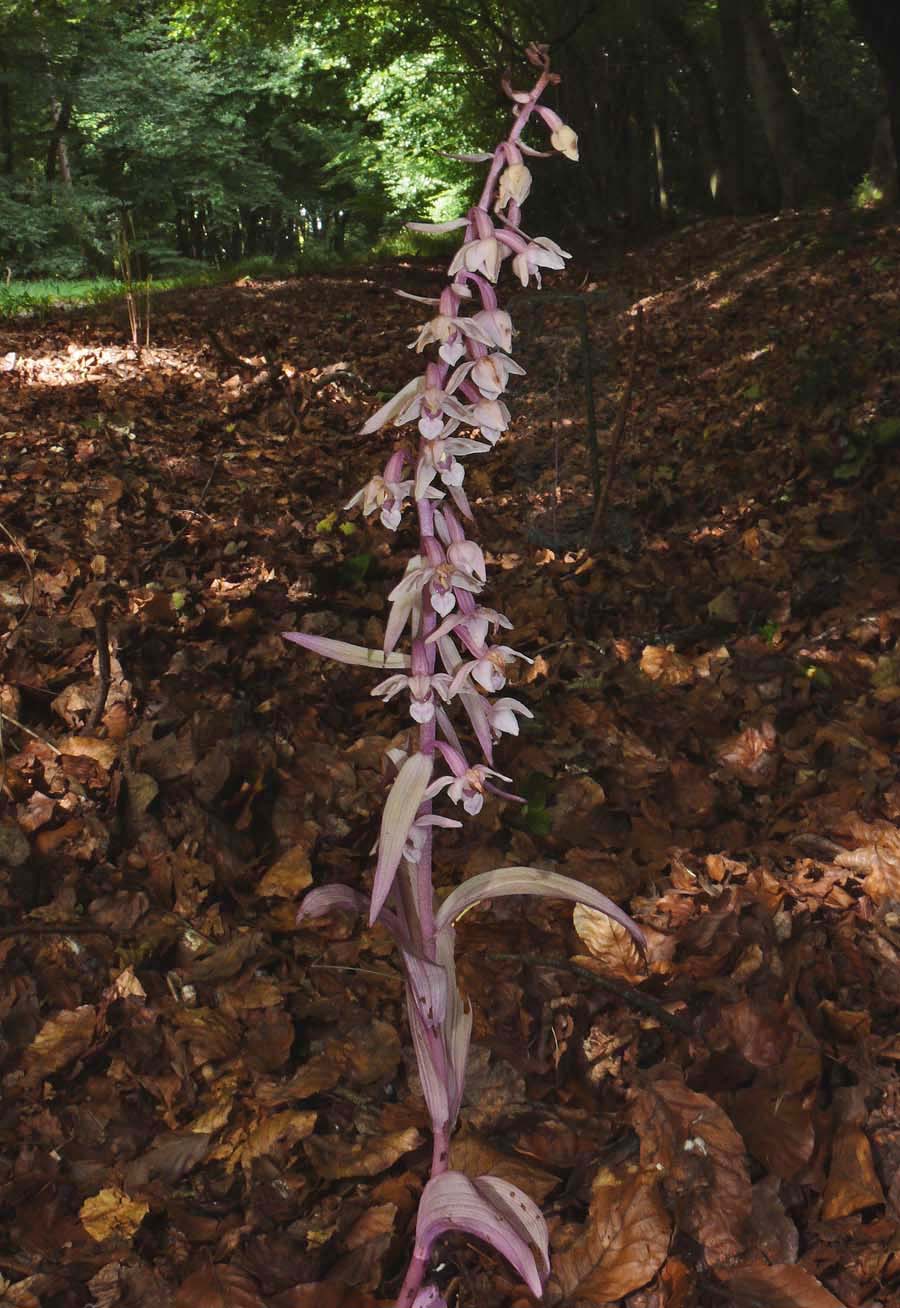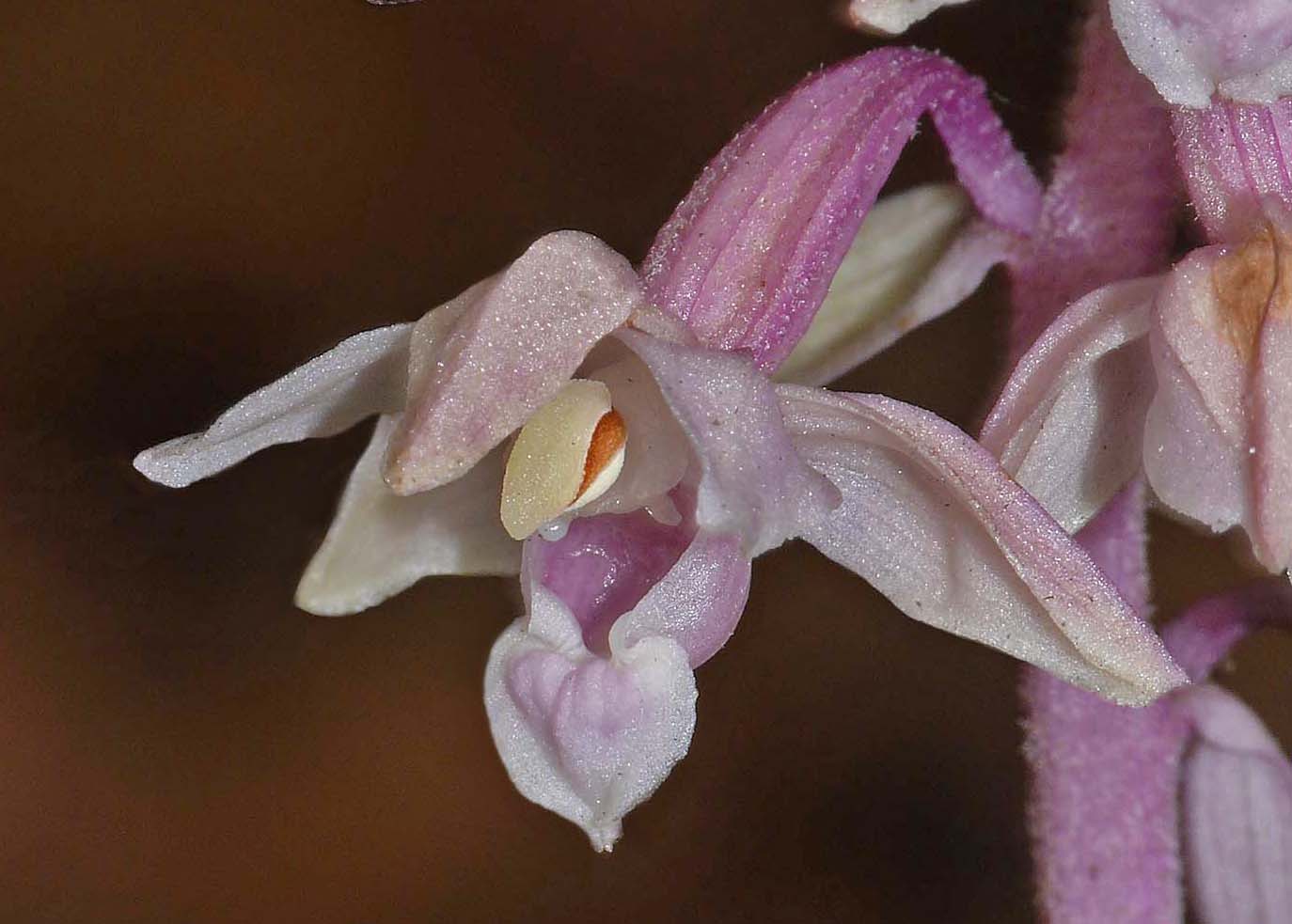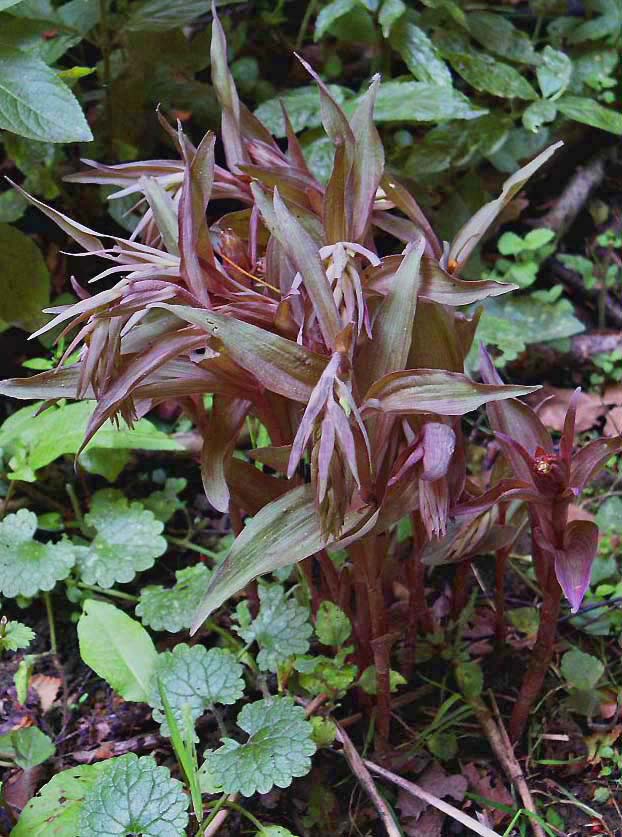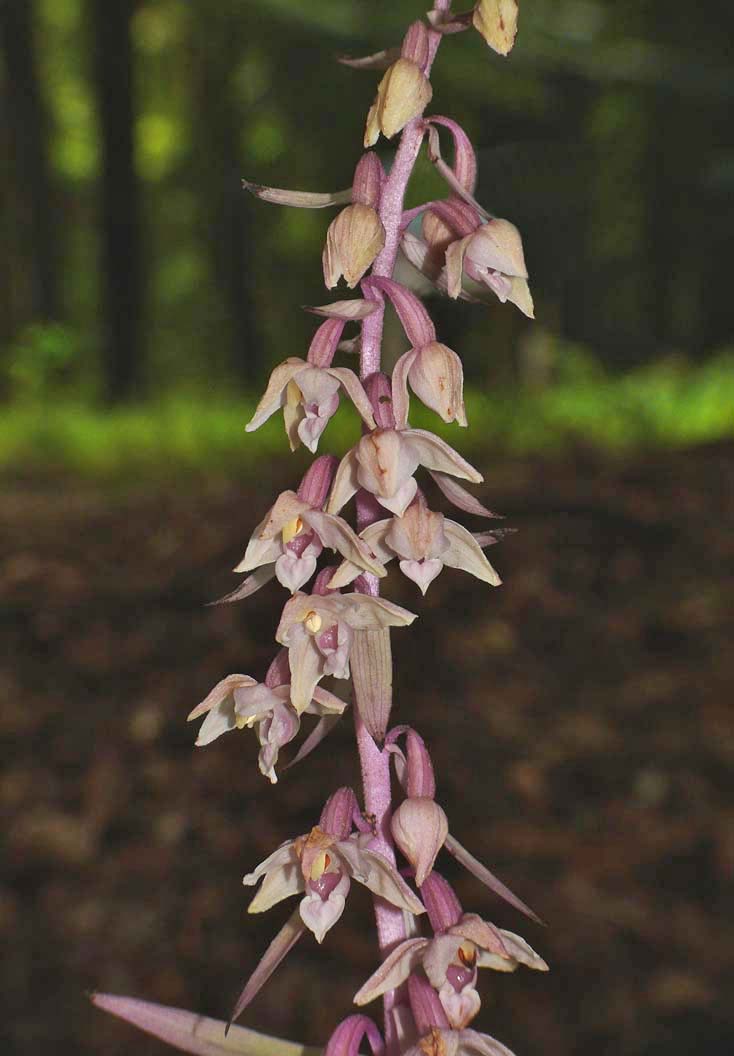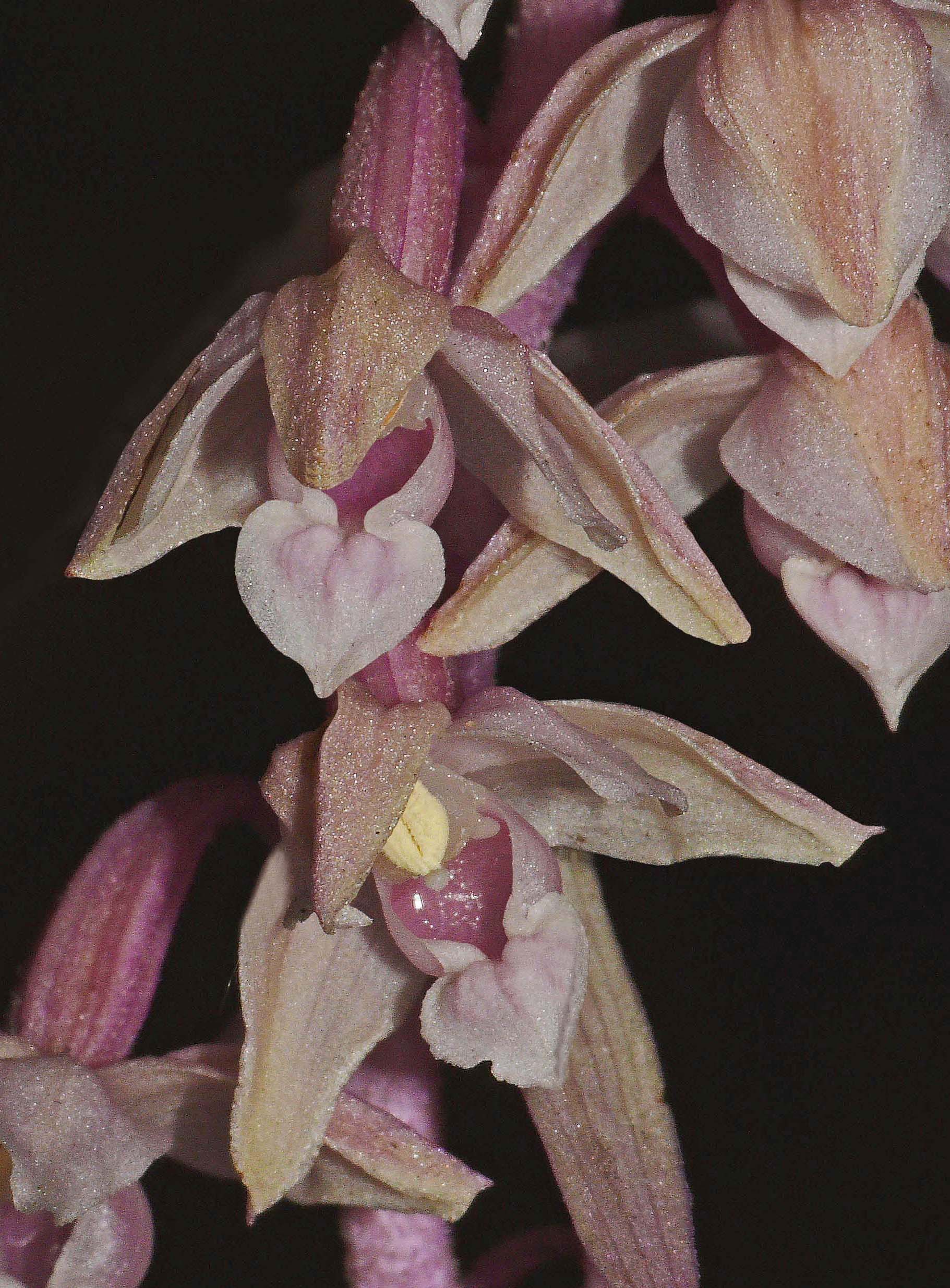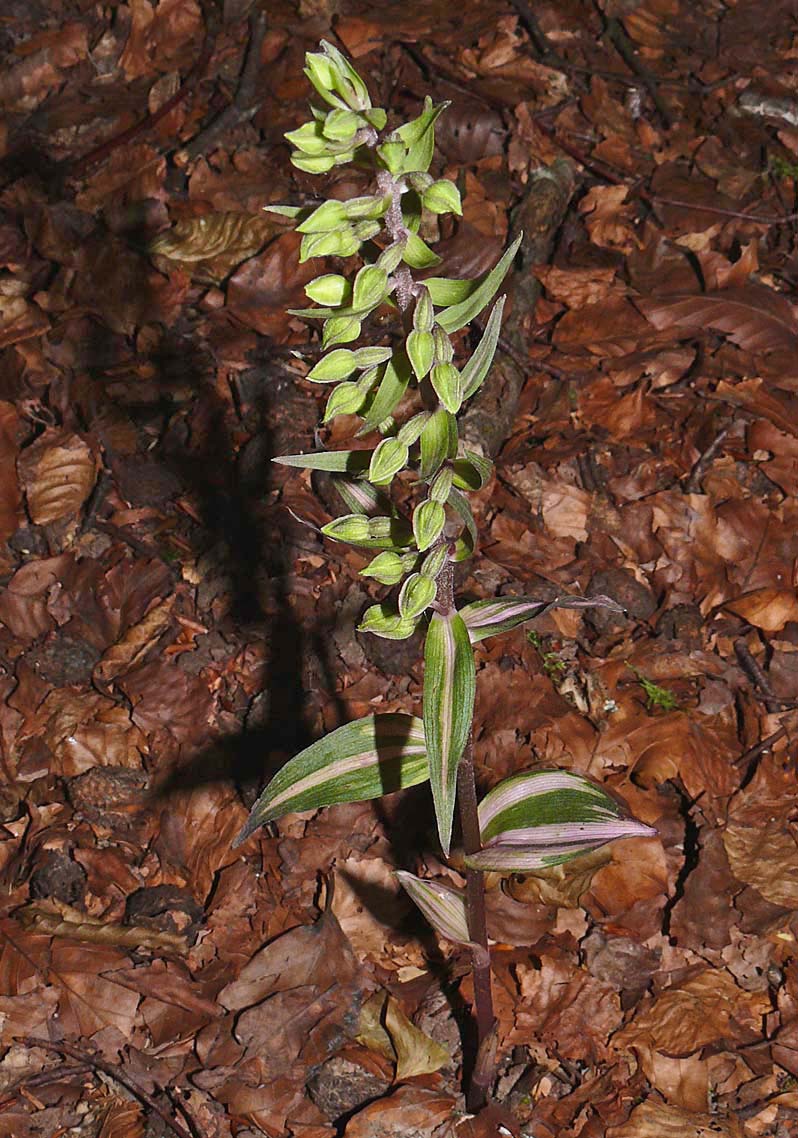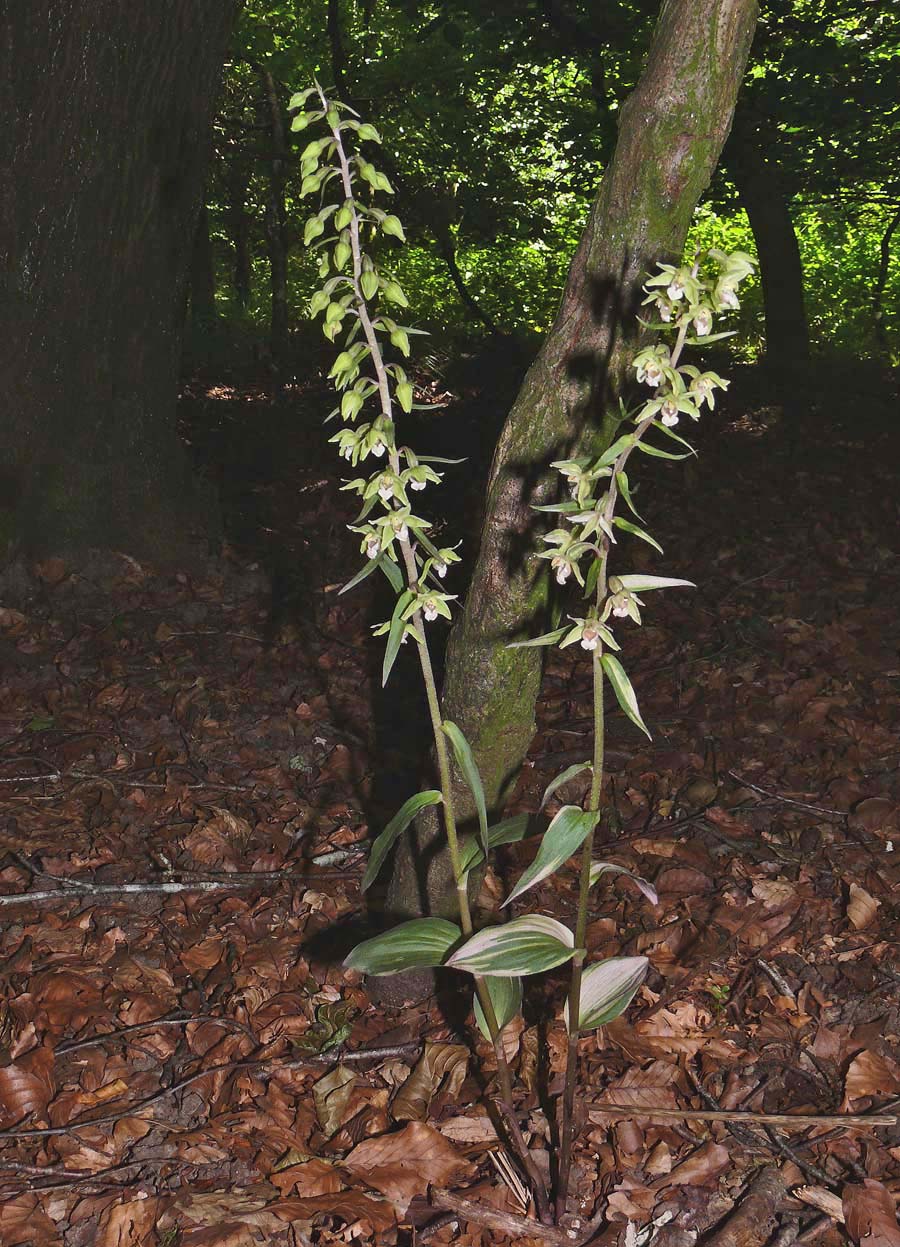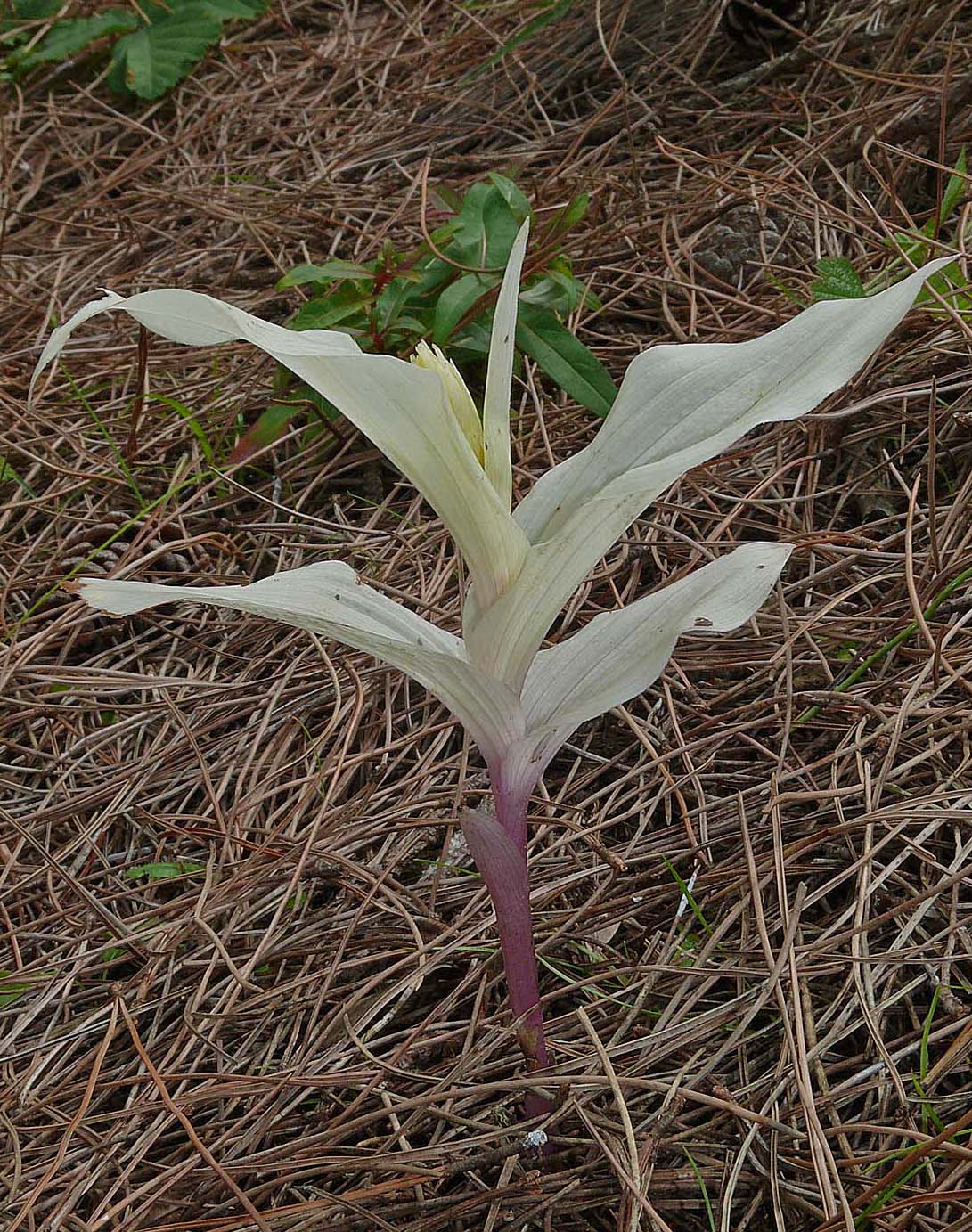E. purpurata
was first described from the Hartz massif, Germany by J. E. Smith in
1814
and its name refers to the purple
colouration of the flowers, a feature that is also
reflected in its common name, the Violet Helleborine. In reality
the species rarely demonstrates this purple hue to any great extent and
is more usually an overall, dull olive grey.
An exception to this however is the plant described here, which is an achlorophyllous form of E. purpurata first formally recognized by Erdner in 1907 and then named E. latifolia luses rosea. Since this time it has enjoyed several synonyms but the most recent, E. purpurata f rosea (Delforge, 2008) would appear the most widely accepted. This form of the orchid has evolved a saprophytic existence in which fungal mycorhiza have penetrated the plants root system and provide for all its growth requirements, notably carbohydrates. This myco-heterotrophic system of sustenance replaces the need for the production of the photosynthesis enabling chlorophyll and the plant is therefore characterized by a lack of green pigment. It also accounts for the plants ability to survive in the deepest forest shade.
The extent to which the plant is reliant on its root mycorhiza can be assessed by the degree of colour loss and can range from being completely anthocyanin and pigment free (white) to plants which merely exhibit some leaf variegation. Examples of this latter form can be seen in pictures 7 and 8 whilst picture 9 depicts an example of an E. dunensis plant that is approaching a condition of pure albanism. It is interesting to note that in other plant species, including orchids which have become saprophytes, there is almost always a corresponding reduction in shoot and leaf structure (eg:- Epipogium aphyllum). This does not appear to be present in the achlorophyllous forms of Epipactis.
An exception to this however is the plant described here, which is an achlorophyllous form of E. purpurata first formally recognized by Erdner in 1907 and then named E. latifolia luses rosea. Since this time it has enjoyed several synonyms but the most recent, E. purpurata f rosea (Delforge, 2008) would appear the most widely accepted. This form of the orchid has evolved a saprophytic existence in which fungal mycorhiza have penetrated the plants root system and provide for all its growth requirements, notably carbohydrates. This myco-heterotrophic system of sustenance replaces the need for the production of the photosynthesis enabling chlorophyll and the plant is therefore characterized by a lack of green pigment. It also accounts for the plants ability to survive in the deepest forest shade.
The extent to which the plant is reliant on its root mycorhiza can be assessed by the degree of colour loss and can range from being completely anthocyanin and pigment free (white) to plants which merely exhibit some leaf variegation. Examples of this latter form can be seen in pictures 7 and 8 whilst picture 9 depicts an example of an E. dunensis plant that is approaching a condition of pure albanism. It is interesting to note that in other plant species, including orchids which have become saprophytes, there is almost always a corresponding reduction in shoot and leaf structure (eg:- Epipogium aphyllum). This does not appear to be present in the achlorophyllous forms of Epipactis.
